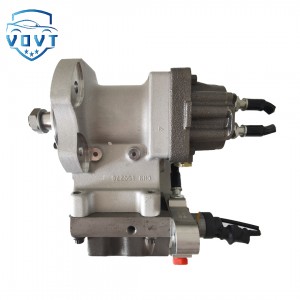Diesel Fuel Injection Pump 0 445 010 159 0445010159 Engine Auto Engine Part
products description
| Reference Code | 0 445 010 159 |
| MOQ | 1 PCS |
| Certification | ISO9001 |
| Place of Origin | China |
| Packaging | Neutral packing |
| Quality Control | 100% tested before shipment |
| Lead time | 7~15 working days |
| Payment | T/T, Western Union, Money Gram, Paypal, Alipay, Wechat |
Energy-Efficiency-Oriented Selection of Diesel Fuel Pumps for Construction Machinery
Fuel pumps play a critical role in the performance, efficiency, and reliability of diesel engines used in construction machinery such as excavators, loaders, bulldozers, and cranes. As global regulations tighten on emissions and fuel consumption, selecting a fuel pump solely based on pressure and flow requirements is no longer sufficient. Instead, an energy-efficiency-oriented selection methodology is required to reduce parasitic losses, extend component life, and enhance overall productivity. This study examines the influencing factors, evaluation criteria, and optimization strategies for selecting diesel fuel pumps tailored to the energy-efficiency needs of modern construction machinery.
The first key aspect of energy-efficient pump selection concerns the matching between pump displacement and engine operating characteristics. Construction machinery often operates under highly variable load conditions, with frequent transitions among idle, partial load, and full load. Oversized pumps can ensure adequate pressure but introduce unnecessary mechanical drag, increasing fuel consumption. Undersized pumps, in contrast, force the engine to compensate through higher rotational speed, reducing efficiency and compromising injection precision. Therefore, an optimal displacement range must be determined through engine mapping, ensuring the pump operates near peak efficiency across the machine’s typical duty cycle.
A second critical factor is the choice of pump type, which directly affects energy conversion efficiency. For example, electronically controlled variable-displacement pumps offer significant advantages over fixed-displacement mechanical pumps. They reduce throttling losses by adapting fuel delivery to real-time engine requirements, especially during low-load conditions that dominate construction machinery usage. High-pressure common-rail pumps with smart metering valves can further reduce excess fuel circulation and minimize heat generation inside the system.
Energy efficiency is also influenced by the design of the pump’s mechanical structure. Advanced plunger designs with low-friction coatings, such as DLC (diamond-like carbon), reduce sliding losses and wear. Optimized cam profiles lower impact forces and improve volumetric efficiency. Additionally, lightweight materials such as high-strength aluminum or composite housings can reduce rotational inertia, improving pump responsiveness and reducing parasitic load on the engine crankshaft.
A comprehensive selection framework must also consider the hydraulic-electric coupling characteristics of the pump in systems where electronic actuators are involved. For electrically driven pumps, motor efficiency, starting current, and thermal behavior significantly affect system energy consumption. Brushless DC motors with high torque density and low copper losses are desirable for hybrid or auxiliary pump configurations. In machines using energy recovery systems, the pump must be compatible with regenerative power inputs to maximize overall fuel savings.
To ensure quantitative decision-making, this study proposes an energy-efficiency evaluation index system that integrates pump volumetric efficiency, mechanical efficiency, control efficiency, and thermal efficiency. These indices are weighted according to the specific operating profile of the target machinery. For example, excavators require a stronger emphasis on variable load performance, while loaders benefit more from idle-condition efficiency.
Field tests conducted on mid-size excavators demonstrate that adopting an energy-optimized pump selection strategy can reduce fuel consumption by 3–7%, depending on the operating scenario. In addition, optimized pump selection improves injection stability, reduces carbon buildup in injectors, and lowers thermal stress across the fuel system. These improvements contribute not only to fuel savings but also to longer maintenance intervals and reduced total cost of ownership.
In conclusion, energy-efficiency-oriented pump selection represents a critical evolution for construction machinery. By integrating engine load profiles, pump type, mechanical design improvements, and multi-index evaluation, manufacturers and fleet operators can achieve substantial performance gains and fuel savings. Future research should focus on intelligent pump–engine coordination, real-time adaptive pump control, and hybridized pump power sources to further elevate energy efficiency in heavy-duty diesel machinery.























